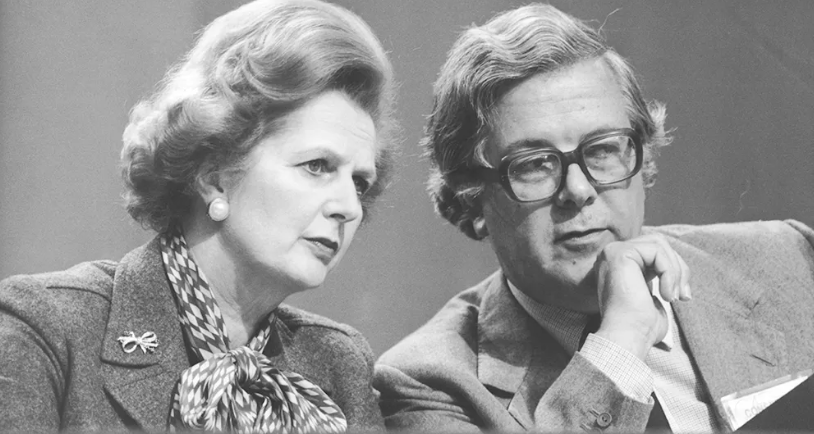Monetarist vs Keynesian Revised
Keynes vs Monetarists: who rules the macroeconomy? A fun dive into economic policy, sticky wages, and real-world shocks explained for IB Economics students.
IB ECONOMICS HLIB ECONOMICS MACROECONOMICSIB ECONOMICSIB ECONOMICS SL
Lawrence Robert
4/24/20253 min read


Monetarist vs Keynesian – Economic Policy and Assumptions
Keynes vs Monetarists – The Macro Showdown
Imagine two economists walk into a pub (yes, the start of every good IB economics lesson). One orders a pint and says, “When things go wrong, the government needs to step in.” The other sips a black coffee and replies, “Let the market fix itself, mate.”
This is exactly the world of Keynesian vs Monetarist economics.
Internal Assessment (IA) Guide – Free Download
Step-by-step support on topic selection, structure, evaluation, and most common IB Economics IA mistakes.
Understanding key IB Economics Internal Assessment concepts
Applying and explaining them in real-world IB Economics contexts
Building IB Economics IA confidence without drowning in dry theory and explanations.
Download the IA guide now for free and boost your IB Economics grades and confidence:
IB Economics The Keynesian Mindset: "Wages Don’t Budge"
Key assumption? Wage inflexibility. John Maynard Keynes believed wages don’t fall easily. Not because the laws of economics say so - but because real people do not accept pay cuts.
Ever tried telling a footballer they’ll now earn less for hitting the net all season? Or tried asking a teacher to accept a 10% pay cut because “it’s good for the economic equilibrium of the school”? That’s the problem. Workers (and their unions) resist wage reductions, especially in recessions. This makes wages what we call sticky downwards.
Result? The economy gets stuck in a deflationary gap. Unemployment rises, output falls, and everyone waits for something to give.
The Keynesian Fix: Intervene!
Keynesians say, “Don’t just sit there - spend some money!” To restore full employment and boost growth, the government in this case should use:
Expansionary fiscal policy – like tax cuts or increased government spending.
Loose monetary policy – such as cutting interest rates to boost money borrowing and investment.
IB Economics Real-life Example: After the 2008 financial crisis, countries like the USA, UK, and China rolled out massive stimulus packages. In the US, the Obama administration injected $831 billion into the economy. Roads were built, jobs were saved, and the worst was (sort of) avoided.
IB Economics The Monetarist Model: "Markets Know Best"
Milton Friedman and his monetarist crew took one look at that and went, “You’re doing it wrong.” For them, long-term macroeconomic equilibrium always returns - no government intervention needed.
Their belief? Markets self-correct. If unemployment rises, wages will fall. Eventually, employers will start hiring again. The Long-Run Aggregate Supply (LRAS) curve is vertical at full employment (YF), and the market naturally will eventually return to that point.
Unemployment? That’s just natural unemployment - people between jobs or changing careers. It's not a crisis. It’s life.
The Monetarist Fix: Don’t Fix It!
In the monetarist view, government intervention and spending only makes things worse in the long run:
It creates inflation.
It adds public debt.
It distorts incentives and crowds out private sector investment.
So what’s their solution? Supply-side policies:
Improve education and training, adapt people's skills to the market
Cut red tape and taxes
Invest in technology and infrastructure
These shift the LRAS outwards - growing the economy without inflation.
IB Economics Real-life example: Singapore. Rather than throwing money at recessions, it focuses on training programmes, low taxes, and innovation incentives. The result? High growth, low inflation, and strong productivity.
So... Who’s Right?
It depends.
When COVID-19 struck, Keynesian tools were everywhere. Governments had to step in - furlough schemes, unemployment benefits, stimulus cheques. The free market alone wouldn’t have saved jobs in sectors like hospitality or airlines. Demand had evaporated. Wages didn’t “flex”. Intervention was essential.
But during boom years? Monetarists argue that central banks and governments should step back and let supply-side efficiency drive economic growth.
For access to all IB Economics exam practice questions, model answers, IB Economics complete diagrams together with full explanations, and detailed assessment criteria, explore the Complete IB Economics Course:
Final Takeaway for your IB Economics Course (and what to write in your exam)
Monetarists Wages Sticky vs Keynesian Wages Flexible
Monetarists Government role Often harmful vs Keynesian Government role Essential in recessions
Monetarists Policy tools Supply-side only vs Keynesian Policy tools Fiscal and monetary
Monetarists Equilibrium Always returns to YF vs Keynesian Equilibrium Can occur below YF
Monetarists Real-world examples Singapore, Germany (long-term focus) vs Keynesian Real-world examples 2008 crisis, COVID-19
Every episode of Pint-Sized links back to what matters most for your IB Economics course:
Understanding key IB Economics concepts
Applying them in real-world IB Economics contexts
Building IB Economics course confidence without drowning in dry theory.
Subscribe for free to exclusive episodes designed to boost your IB Economics grades and confidence:
IB Economics Story to Remember
Imagine a classroom. Students (workers) haven’t done their homework (output is down). The Keynesian teacher says, “Let’s give them chocolate (stimulus) and get them motivated!” The Monetarist teacher says, “Take away the chairs. When they get tired of standing, they’ll sit down and study.”
Whichever you agree with, just remember - in economics, assumptions shape the answers.
Stay well,
IB Complete Support Courses, a new generation of affordable support materials directed at IB students seeking grades 6 or 7.
© Theibtrainer.com 2012-2025. All rights reserved.
